#arthropod
Text

Green darner
By: John Gerlach
From: Natural History Magazine
1984
93 notes
·
View notes
Text
I like Cinder!
@bugology
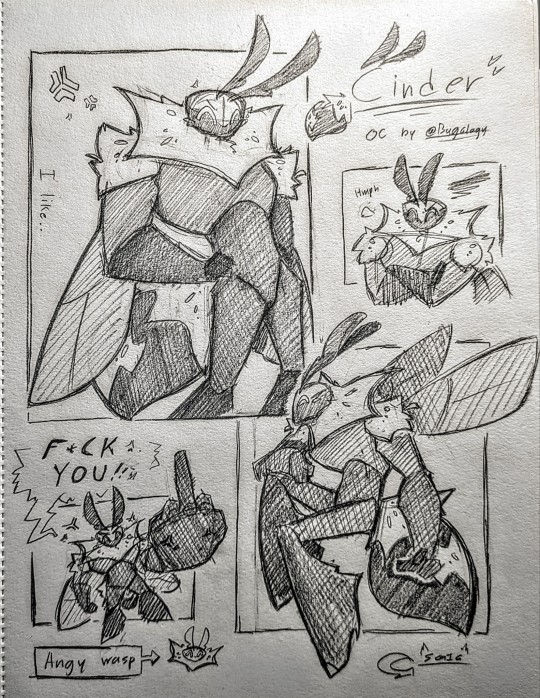
#sgigart#not my oc#other people's art#i like x series#arthropod#gift art#this guy looked fun to draw#and he was :]c#hope you like!! ^^
42 notes
·
View notes
Text
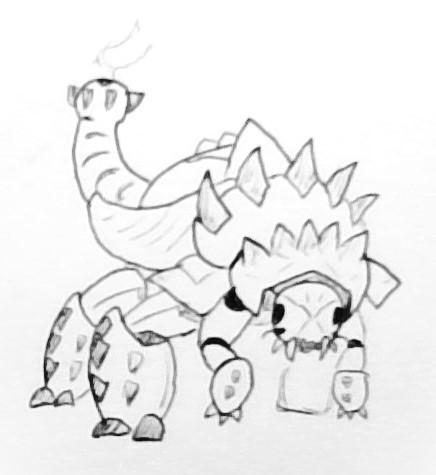
I really, really hope one day we get a bombardier beetle monster.
-
BOMBORO
Title - Explosion beetle
Monster class - Neopteran
Known locales - Nigh any environment
Element/ailment - Blast + Hellfire
Elemental weakness - Water (3), Ice (2), Thunder (1), Dragon (1), Fire (1)
Ailment weakness - Poison (3), Paralysis (2), Sleep (2), Stun (0), Blast (0)
Bomboro is a neopteran found roaming across many different environments. It is distinguished by the heavily armoured spiky carapace and its purplish-golden sheen. As its appearance indicates, Bomboro is incredibly durable, with its second and third pair of limbs boasting reinforced scutes to withstand impact and explosive force, whilst the first pair can act as cudgels as well as handling. Notably, the abdomen can extend a mace-like tip that exudes reactive chemicals.
Though imposing, Bomboro is a fungivore, dedicated to travelling far and wide to sample all types of fungi. It can extend its head from the armoured covering to dig for mycelium or reach sheltered mushrooms, often using its heavyset limbs to dig out food where it can. Supremely confident in its defences, Bomboro is notably very docile, perfectly tolerant of humans and other monsters alike in its proximity. It takes a lot to aggravate the neopteran, so field workers can operate safely in its presence. In fact, Bomboro can be a beneficial presence since the possibility of angering it usually deters most predators.
Bomboro's strength lies not only in its defensive integrity but also its ability to produce explosive chemicals from its abdomen. A combination of biological components produced by symbiotic bacteria mixed in the neopteran's abdomen results in its abdomen's tip launching blasts of volatile residue. This makes for excellent projectiles, often launching it in large globs or concentrating the reaction into a stream. If particularly enraged, Bomboro adds new components to its mixtures alongside gaseous byproducts of its diet. This new reaction discharges burning purple flames that near perfectly emulate the Hellfire used by the fanged wyvern Magnamalo. Much like Magnamalo, Bomboro can also use its explosive bursts to propel itself, either avoiding attack or using its armoured body as a battering ram.
While Bomboro can fly, it is too heavy for its wings to sustain flight for long, and so often it travels by explosive propulsion. It never stops roaming, always searching for new pastures of fungi to feed on. Males and females have no notion of reproductive cycles; they will simply mate as soon as they cross paths and then go their separate ways. The mother lays her eggs close to a large supply of fungi and then leaves them to their fate. The young shelter in the undergrowth until they are large and bulky enough to survive in the open wild.
Interestingly, Bomboro can at times be altruistic to other species. It has been known to attack predators that it witnesses attempting to prey on other monsters, and otherwise reacts violently to acts of aggression. Researchers do not yet know why Bomboro seems so protective of weaker creatures, though perhaps it is a luxury afforded by its impressive defences.
Bomboro can prove challenging on account of its ailments and armour (Low Rank - 3, High/Master Rank - 3), but overall proves too predictable to be a genuinely threatening monster. Pitfall traps work well against its bulk, and water weapons can reduce the effectiveness of its explosive residue. While supremely armoured, Bomboro is not invincible; hunters could aim for the comparitively fragile underside and abdomen.
Between its armour and explosive bursts, Bomboro is too troublesome for most predators to deal with. It rarely competes and is usually content to feed alongside other fungivores. However, even Bomboro must fear spectacular predators such as Deviljho or Bazelgeuse. In addition, its nemesis is the bird wyvern Valefirir Zevir, who possesses numerous tools to overcome Bomboro. At any hint of Valefirir Zevir's presence, any Bomboro in the area immediately flee.
-
Thank you for reading and take care.
25 notes
·
View notes
Text
Yellowjacket queen that was building a nest in my shed last year. I took the nest down and put her in the freezer in a container, her name is Aurora
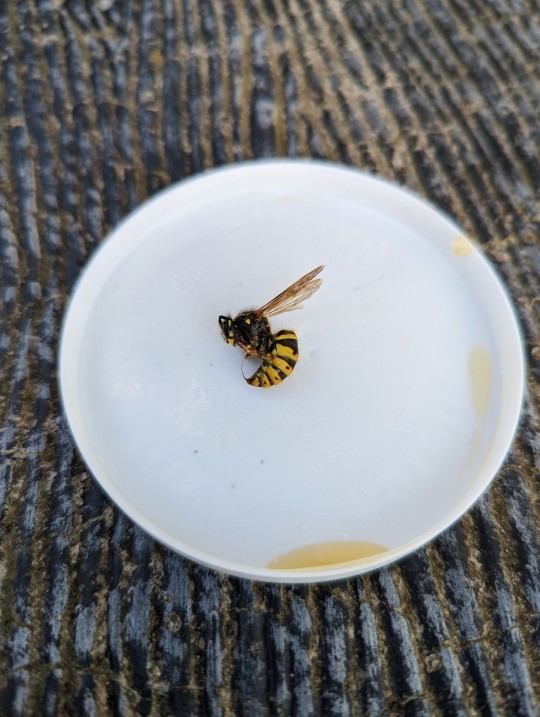

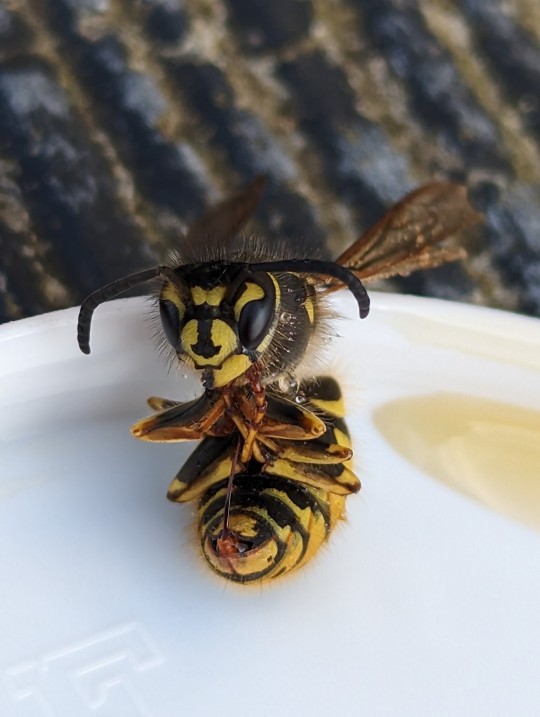
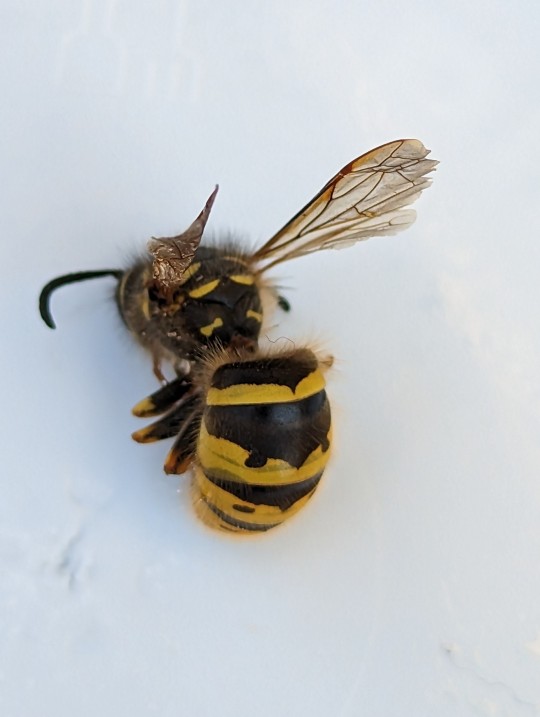

#insect#insects#bug#bugs#entomology#wasp#wasps#bugposting#invertebrate#invertebrates#insect photography#arthropod#arthropods
16 notes
·
View notes
Photo
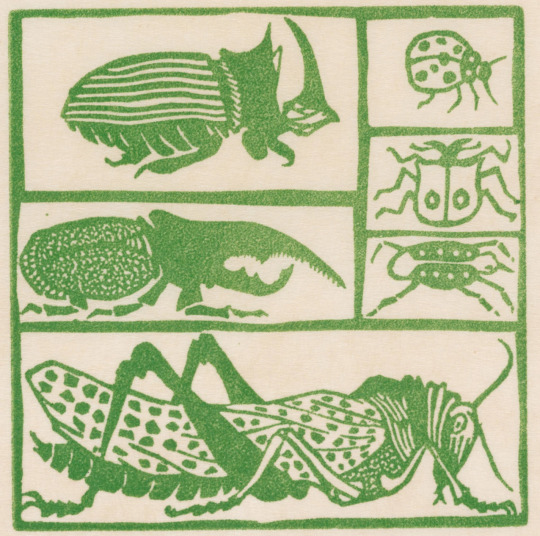
Grasshopper and Beetles. 1951. Leonard Baskin. Linocut. Plate 23 from A Little Book of Natural History. [source]
20K notes
·
View notes
Text
Shellback Crabs: these crabs create their own shields out of clamshells; their semi-membranous bodies can be pressed into the contours of the shell, producing a suction mechanism that holds the shell in place
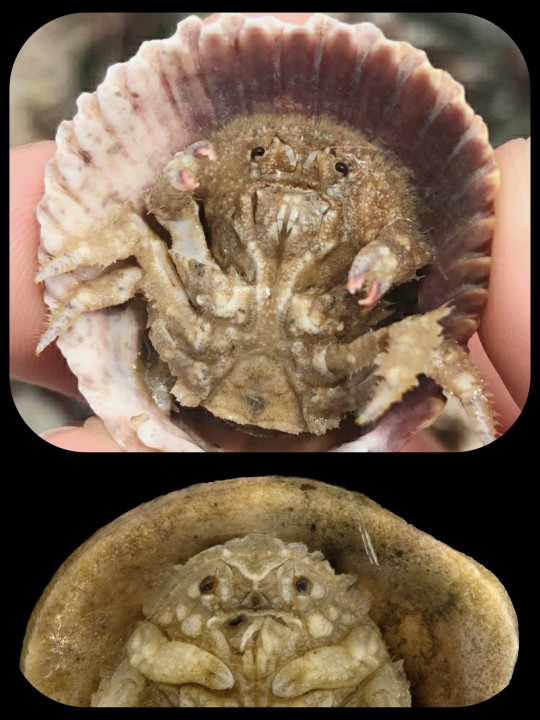
The members of this genus (Hypoconcha) have a series of unique adaptations that facilitate this kind of camouflage behavior. Many of the Dromiidae crabs (e.g. hermit crabs, sponge crabs, shellback crabs, etc.) are equipped with a specialized pair of legs that enables the crab to hold a shell, sea sponge, and/or ascidian against their body, but shellback crabs also have a flexible, semi-membranous body that can be tucked more firmly into the contours of a bivalve shell, producing a suction mechanism that keeps the shell firmly locked in place.
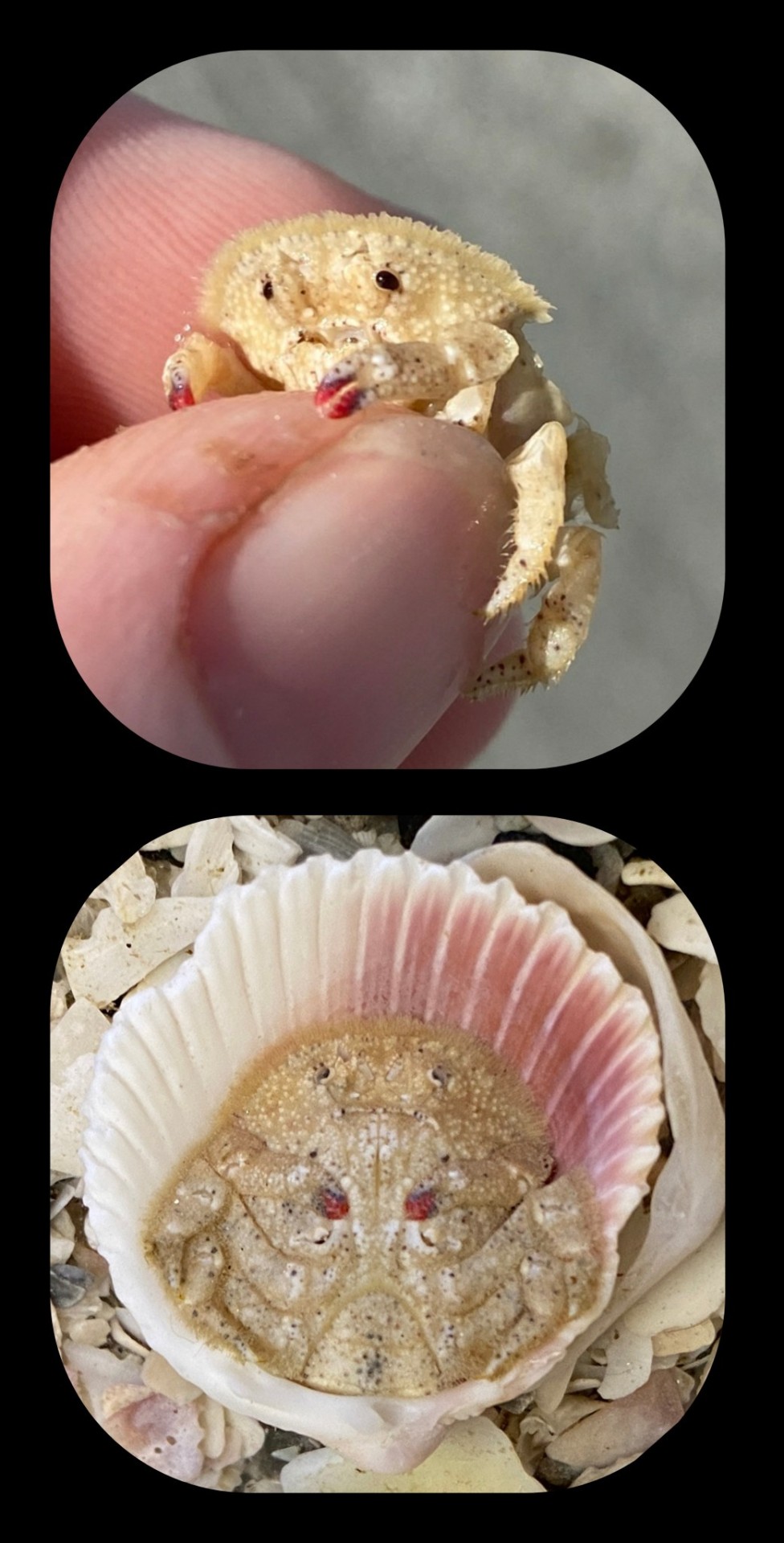
The body of the shellback crab is also covered in a very fine layer of hair-like structures called setae, and when the crab presses itself against the shell, these membranous "hairs" can take on an almost translucent appearance, particularly around the margins of the crab's body.
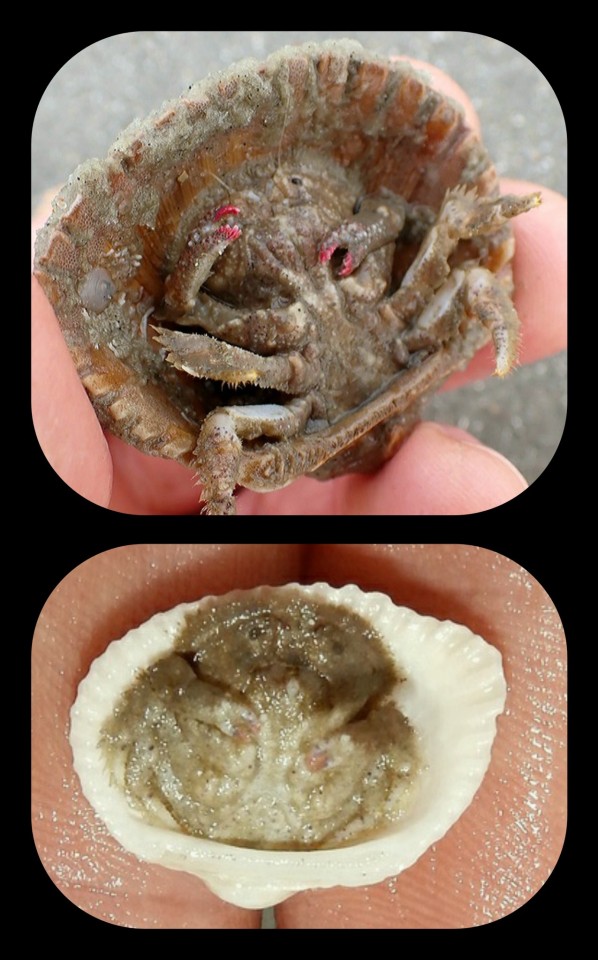
I recently posted some photos/info about some of the crabs in the genus Lamarckdromia (which belongs to the same family) and as I was doing the background research for that post, I was just kind of mesmerized by all of these weirdly adorable crabs that seem to exist within the Dromiidae family tree. Each genus has its own unique adaptations that allow the crabs to use specific materials for camouflage -- some of them use living sponges, clamshells, ascidians, etc.
And I could not stop laughing at the little faces on these crabs. They've all got the same bemused/indignant expression...as if some random asshole has just walked up to them, shoved them over, and announced to the entire ocean that there's a crab hiding beneath that disguise; as if that actually happens to them quite a lot, and they're getting really sick of it.

Sources & More Info:
Crustaceana Monographs: Comparison of the Shell-Carrying Behaviors of Desmodromia, Conchoecetes, and Hypoconcha (the relevant info is on page 191)
South Carolina Department of Natural Resources: Shellback Crabs and their Larval Stages (PDF)
South Carolina Public Radio: Shellback Crabs
Again, I don't normally feature crustaceans on my blog...but I really couldn't resist this one.
#arthropod#crustacean#marine biology#sea life#crab#shellback crab#hypoconcha#evolution#biology#cute animals#nature is weird#these guys look awfully crabby tho
12K notes
·
View notes
Text



アオスジコシブトハナバチ
群れで眠るところにやっと出会えた。メタリックターコイズブルー縞々集団サイコー。
R5.11
#石垣島#石垣島の自然#沖縄の生き物#アオスジコシブトハナバチ#ハチ#ハナバチ#生き物#自然#昆虫#写真#虫#nature#photography#animal#bugs#entomology#マクロ撮影#マクロ#macronature#arthropod#invertebrate#insect#bee#metallic green
2K notes
·
View notes
Text

i present to you the explosion of color and stick notes that is my sketchbook, look at this harrier du bois
i intended to post only this disco elysium thingy but i already treat tumblr like a pit for my more sketchy stuff so catch these too
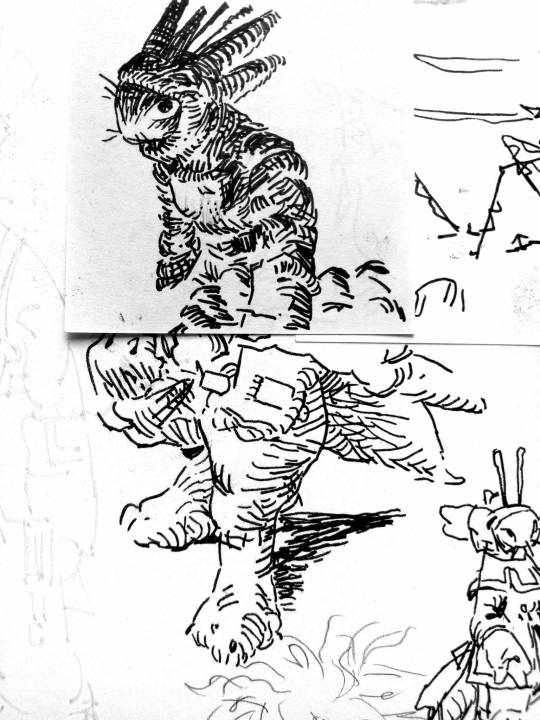


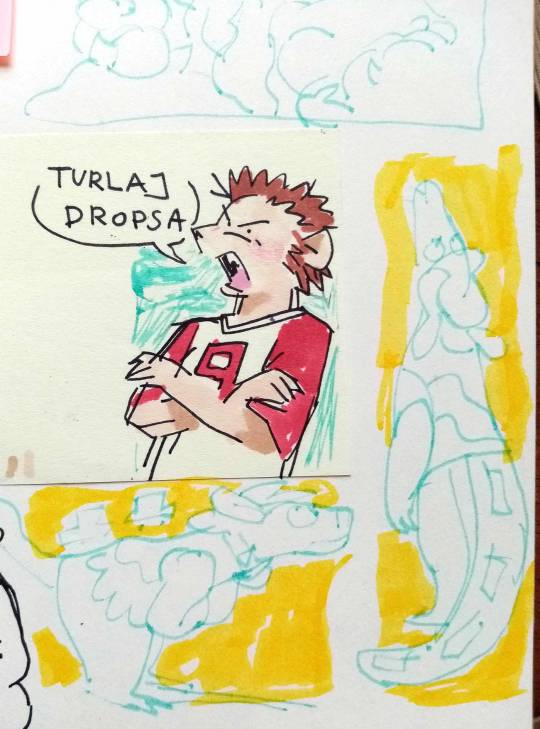
#oc#furry#harrier du bois#harry du bois#disco elysium#kim kitsuragi#sketchbook#traditional art#bunny creature#creature#train armadillo#hedgehog#dragonfly#bug#arthropod
2K notes
·
View notes
Note
saw your post about accepting art requests. Can you draw the early Devonian marellid arthropod Mimetaster? i think they look cool and weird in a silly way :O


Weirdest normal girl I've ever seen
#with an equally weird name#we stan#mimetaster#my art#art#it's like if a starfish and a spider crab had a child#arthropod#devonian#illustration#how do i even tag this
1K notes
·
View notes
Text


Climb time! Feat. @bowelfly's magnificent weevzard, Quercus
950 notes
·
View notes
Text
isopod espionage
2K notes
·
View notes
Text

Orb weaver
By: J. Lurie
From: Wild, Wild World of Animals: Insects & Spiders
1977
105 notes
·
View notes
Text

Giant African millipede at the Denver Zoo!
The keeper said that because these guys would thrive in Colorado (of all places), they have to have a special permit as well as incinerating anything the 'pedes might have had a chance to lay eggs in! We got to pet them!
1K notes
·
View notes
Text
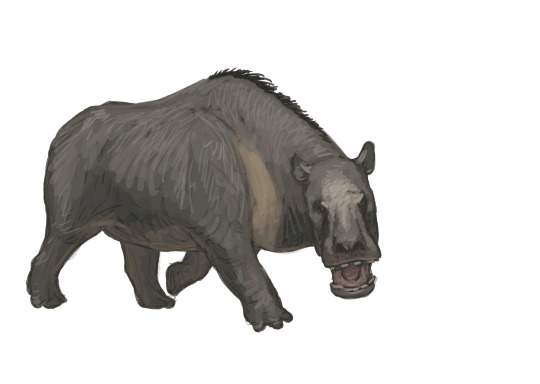
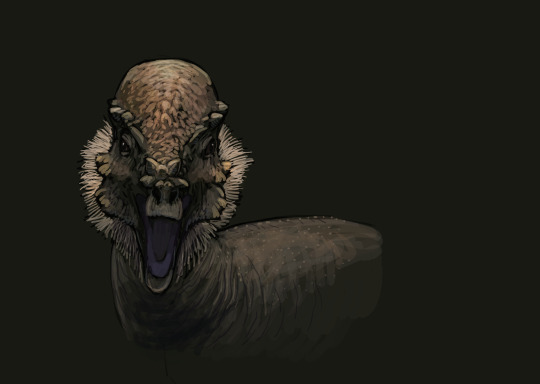


Results from the Flocking #paleostream!
Toxodon, Pachycephalosaurus, Ornimegalonyx and Parioscorpio
701 notes
·
View notes
Text

The tuzoiids were an enigmatic group of Cambrian invertebrates known mostly just from their spiny bivalved carapaces. Although hundreds of fossils of these arthropods were discovered over the last century or so, only vague fragments of the rest of their bodies have been found even in sites usually known for preserving soft tissue impressions.
…Until late 2022, when several new specimens from the Canadian Burgess Shale deposits (~508 million years ago) were described showing tuzoiid anatomy in exceptional detail, finally giving us an idea of what they looked like and where they fit into the early arthropod evolutionary tree.
Tuzoiids like Tuzoia burgessensis here would have grown up to about 23cm long (~9"). They had large eyes on short stalks, a pair of simple antennae, a horizontal fluke-like tail fan, and twelve pairs of appendages along their body – with the front two pairs at the head end being significantly spinier, and most (or all) of these limbs also bearing paddle-like exopods.
The large carapace enclosed most of the body, and was ornamented with protective spines and a net-like surface pattern that probably increased the strength of the relatively thin chitinous structure.
Together all these anatomical features now indicate that tuzoiids were early mandibulates (part of the lineage including modern myriapods, crustaceans, and insects), and were probably very closely related to the hymenocarines.
Tuzoiids seem to have been active swimmers that probably cruised around just above the seafloor, with their stout legs suggesting they could also walk around if they flexed their valves open. The arrangement of their spiny front limbs wasn't suited to grabbing at fast-swimming prey, but instead may have been used to capture slower seafloor animals or to scavenge from carcasses.
———
NixIllustration.com | Tumblr | Twitter | Patreon
#science illustration#paleontology#paleoart#palaeoblr#tuzoia#tuzoiidae#hymenocarina#mandibulata#arthropod#invertebrate#cambrian explosion#art#MYSTERY TACO
2K notes
·
View notes
Photo

Millipede, Gorongosa National Park, Mozambique.
3K notes
·
View notes